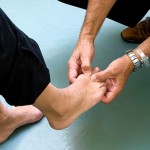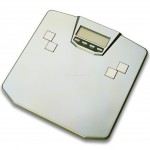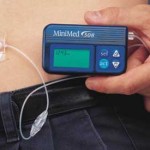Diabetes Self-Management – Getting a Foot Up On Diabetes Care

How many times have we heard it? Many times, however, that’s all we’re told: Check your feet. What am I looking for? What do I do if I find it?!

How many times have we heard it? Many times, however, that’s all we’re told: Check your feet. What am I looking for? What do I do if I find it?!

A recent agreement between Zosano Pharma, Inc. and Novo Nordisk could lead to the introduction of a once-weekly drug for type 2s that is administered via a micro-needle patch system.

Diabetes is the fastest-growing chronic disease in the U.S., but experts says there is a relatively simple and inexpensive way to reduce the soaring cost of treating it: Get patients to take better care of their feet.

Sleep apnea can worsen blood sugar control in people with Type 2 diabetes by disrupting the deepest stage of sleep, a new study suggests. The findings provide another good reason for people with sleep apnea to wear a CPAP mask that helps assure uninterrupted breathing, the standard treatment for the condition, throughout the night.

Are you ready for a challenge? Then let’s take a trip together–just me, you, and diabetes. Another travel season is upon us, with all of the challenges and frustrations that it entails for those with type 1 and type 2 diabetes. It might not simple or easy to manage, but it should be rewarding if […]

n the popular imagination, Type 2 diabetes is often associated with being overweight or obese. According to a study released last week, however, while there is a correlation between overweight and diabetes, the pattern may be more complex than even many scientists had previously believed.

NM504 is designed to improve glucose tolerance and other metabolic parameters in patients with diabetes by shifting the gastrointestinal microbiome–the micro-organisms that inhabit the human body.

Studies have shown that those with higher magnesium intake are 10-47% less likely to develop type 2 diabetes. In the U.S., however, only about 50% of the population achieve the recommended dietary allowance of magnesium, which is 400-420 mg/day for men and 300-310 mg/day for women.

Researchers found that the majority of people diagnosed with type 2 diabetes didn’t get the disease until they’d been overweight or obese for a number of years. What’s more, participants who maintained stable levels of overweight and eventually developed type 2 diabetes didn’t have a significant rise in their level of insulin resistance.

A recent study provided scientific data to back up that hunch. A team of researchers measured the body mass index of 6,157 people, aged 50 or older in 2006 and again in 2010. They also asked each participant, whether overweight or not, whether they had experienced discrimination based on weight.

A recent article written for the Joslin Diabetes Blog focuses on ways to circumvent the challenges associated with the addition of meal-time bolus insulin regimens. They point out that most patients starting the addition of bolus insulin begin with all three meal-time additions at once which can be overwhelming

DNA data was brought together from more than 48,000 patients and 139,000 healthy controls from four different ethnic groups. The research was conducted by an international consortium of investigators from 20 countries on four continents, co-led by investigators from Oxford University’s Wellcome Trust Centre for Human Genetics.

More than 23 million people across the United States have been diagnosed with type-two diabetes. Treatment often involves surgery, medication, or both, but researchers are testing a new treatment called EndoBarrier that doesn’t require going under the knife or taking any medication.

New research published in Diabetologia (the journal of the European Association for the Study of Diabetes) shows that higher consumption of yoghurt, compared with no consumption, can reduce the risk of new-onset type 2 diabetes by 28%.

According to research from the Cleveland Clinic, after gastric bypass, obese diabetes patients had a 40 percent reduced risk of experiencing a heart attack and 42 percent less risk of having a stroke.

Right now, the only T2-focused pump available is the V-Go made by New Jersey-based Valeritas. We told you about this rectangle-shaped patch pump before, as it’s been on the market for almost two years now for those type 2s who want to replace daily injections with a once-a-day disposable pump that can give set boluses […]

The study looked at a total of 75,498 couples and found that having a spouse with type 2 diabetes can increase the partner’s diabetic risk by 26%. In explanation of these results, the researchers cited something called “social clustering”.

You might have already heard of the first SGLT2 drug approved by the FDA. It’s called Invokana, and it arrived in the United States last year. Terminology aside, this class of drugs seems to represent a conspicuous advance in treatment for type 2s. And it’s all because they work in a distinctly different way than […]

Women with diets rich in foods like berries, chocolate, red wine and tea also have reduced inflammation and insulin resistance – a diabetes precursor, according to new UK research.

The device scans the eye with a blue light, measuring the intensity of light emitted by the eye. When there’s too much sugar in a patient’s body, sugar molecules start binding to proteins in the lens of the eye. A higher measurement of what’s called “lens autofluorescence” corresponds to higher levels of glucose build-up in […]